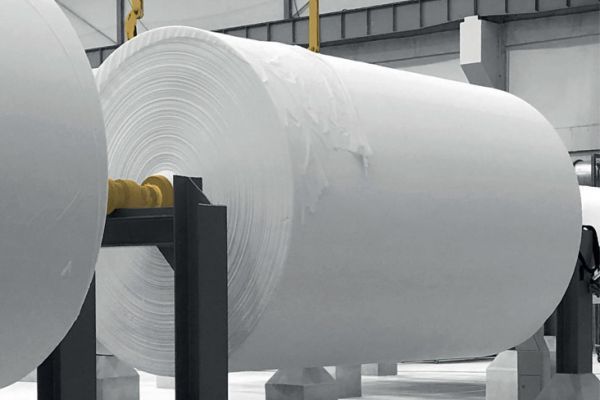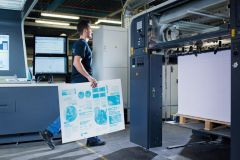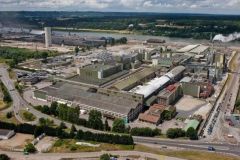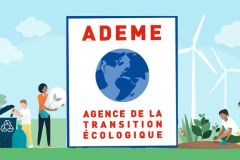The paper and cardboard industry is a strategic sector that must meet the requirements of the French National Low Carbon Strategy (Stratégie Nationale Bas Carbone - SNBC). For the sector, which covers production for packaging, hygiene, graphics and other applications, this means reducing greenhouse gas (GHG) emissions by at least 81% by 2050, compared with 2015 levels. The Agence de l'environnement et de la maîtrise de l'énergie (Ademe) has drawn up a transition plan proposing two distinct trajectories to meet and even exceed this objective, with a 60% reduction in GHG emissions by 2030 and over 95% by 2050, again compared to 2015.
1st scenario: mass reuse and limited wood energy
The first scenario is based on a mass reuse approach and limiting the use of wood energy. The aim is to decarbonize production by combining several levers.
The number of new logistics boxes in circulation will be reduced by the complementary use of used boxes and the development of plastic crates.
Biomass would be developed up to 2030 to gradually replace fossil fuels. Thereafter, electrification would take center stage with the use of very-high-temperature heat pumps (THT Pac) and electric boilers.
The deployment of new wood-fired boilers after 2030 will be limited to plants that do not produce virgin fiber pulp and require very high temperature heat, such as the hygiene sector.
The integration of other renewable thermal energy sources, such as geothermal and solar thermal, will support this transition. Virgin fiber pulp mills, for their part, will have improved the efficiency of the kraft process, modernized lime kilns and valorized
the latest biomass co-products to replace their fossil fuel consumption stub.
This strategy is based on a phased transition, giving manufacturers time to adapt their facilities while relying on mature technologies available in the short term.
scenario 2: Innovations and more wood energy
The second scenario relies on technological innovation, with the development of innovative paper materials with water- and grease-barrier properties that will replace a large number of plastic packaging materials (bottles, stretch-wrapped food and banding packaging, molded cellulose cushioning materials) and increased use of wood energy.
Decarbonization will require greater mobilization of biomass for medium- and high-temperature uses, supplemented by EHV Pac (as in scenario 1), biogas produced by methanization of liquid and solid residues, and certain breakthrough technologies vis-à-vis natural gas for mills that do not produce virgin fiber pulp.
The introduction of new technologies will reduce energy consumption and improve the efficiency of industrial processes. Virgin fiber pulp mills, for their part, will have mobilized the same decarbonization levers as in scenario 1.
This scenario is based on technical advances that could profoundly alter production processes, but requires significant investment capacity on the part of manufacturers.
Three major points of this trajectory
The first major point of this analysis is the reduction in the paper industry's final energy consumption by around 45% in 2050 compared with 2015, whatever the scenario.
The report's second key point concerns the evolution of electricity consumption. Improving the performance of machines and pumps could reduce the industry's electricity draw from the grid by 30% between 2015 and 2030, and from 2030 onwards, the electrification of the industry with the introduction of EHV Pac (in both scenarios) and electric boilers (in scenario 1) will intensify this reduction.
The third key point is the consumption of wood energy, wood waste and solid fuel
(CSR). The large number of wood-fired boilers installed between 2015 and 2030 should increase consumption of this resource within the industry, and reduce consumption of network gas in both scenarios.
After 2030, wood-energy consumption stabilizes in scenario 2, while in scenario 1 it gradually declines thanks to the deployment of electric boilers and EHV Pac.
Transition issues and challenges
Whatever scenario is chosen, a number of challenges need to be met.
The use of biomass requires a strict policy of forest management and fiber recycling. Infrastructure modernization represents a high cost, requiring financial support and regulatory incentives. Finally, electrification requires a stable supply of low-carbon electricity.
The future of the paper and cardboard industry will therefore be decided between these two trajectories, which reflect the different possible trade-offs between technological pragmatism and disruptive innovation.








